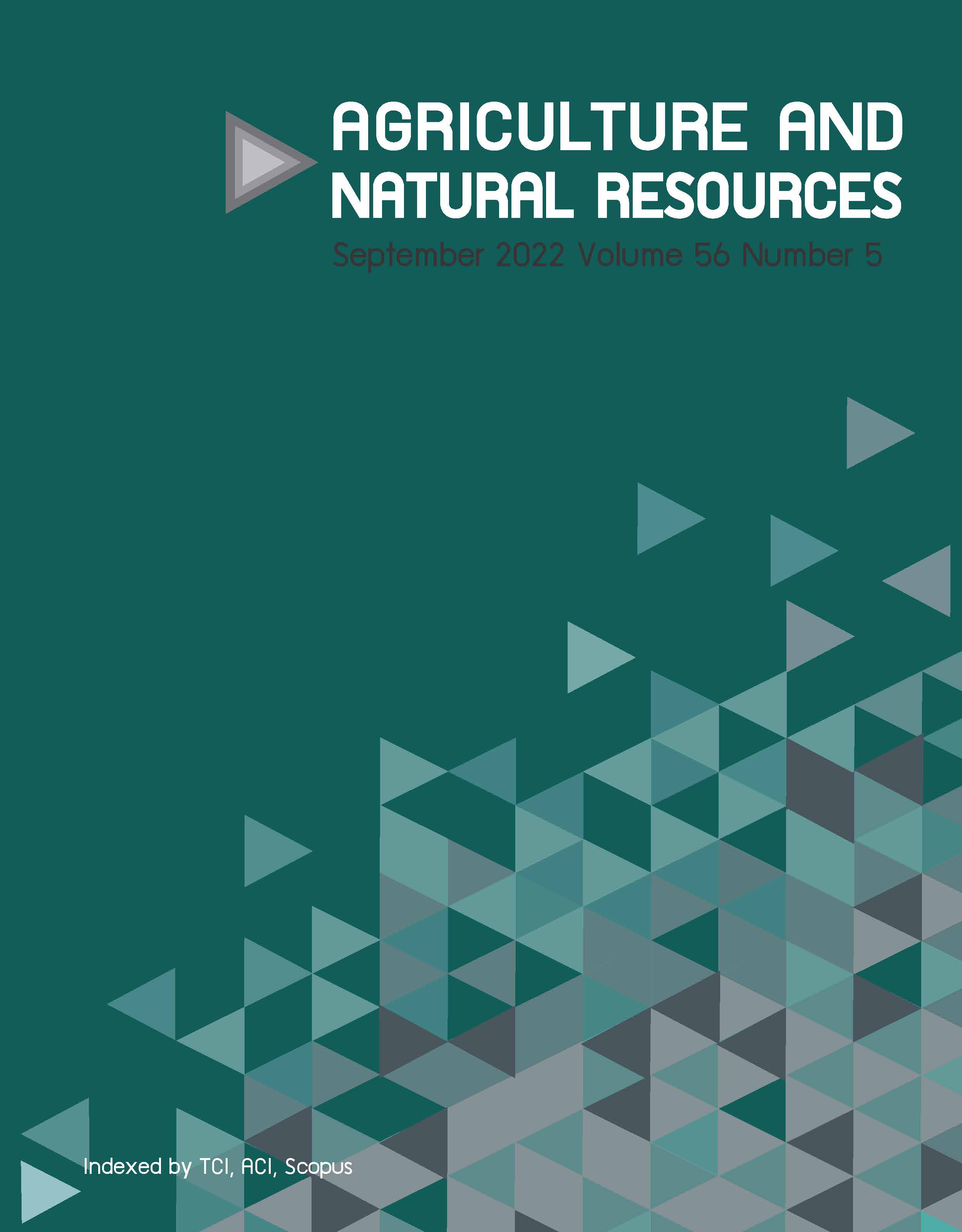Volatile organic compounds of Streptomyces sp. GMR22 inhibit growth of two plant pathogenic fungi
Keywords:
Antifungal activity, Fusarium oxysporum, Ganoderma boninense, Streptomyces sp. GMR22, VOCs.Abstract
Importance of the work: Characterization of Streptomyces sp. GMR22 volatile organic compounds (VOCs) will improve their application as antifungal compounds against plant pathogenic fungi.
Objectives: To identify the VOCs of Streptomyces sp. GMR22 and to assess their bioactive ability against plant pathogenic fungi.
Materials & Methods: The VOCs were analyzed using solid phase microextraction-gas chromatography mass spectrometry (SPME-GCMS). Molecular docking was carried out to predict and select the VOCs as antifungal candidates. The inhibitory effects of selected compounds were tested against Fusarium oxysporum and Ganoderma boninense. Their hyphal morphology was observed using scanning electron microscopy (SEM).
Results: Based on the SPME-GCMS chromatogram results, Streptomyces sp. GMR22 produced 43 VOCs, with one of them (longifolene) having a required binding energy of -7.08 kcal/mol on beta-tubulin, as well as the lowest half maximal inhibitory concentration) of 9.62 ± 0.5 μL/mL and 7.50 ± 0.9 μL/mL for F. oxysporum and G.boninense, respectively. Furthermore, the compound suppressed the growth of F.oxysporum and G. boninense on agar surfaces by 62.5% and 55%, respectively.The SEM examination revealed that the hyphae of both fungi appeared wrinkled.
Main finding: Longifolene was considered the most likely VOC of Streptomyces sp.GMR22 as an effective antifungal compound. Therefore, VOCs, especially longifolene,may be highly beneficial in agriculture.
Downloads
Published
How to Cite
Issue
Section
License
Copyright (c) 2022 Kasetsart Universityonline 2452-316X print 2468-1458/Copyright © 2022. This is an open access article under the CC BY-NC-ND license (http://creativecommons.org/licenses/by-nc-nd/4.0/),
production and hosting by Kasetsart University of Research and Development Institute on behalf of Kasetsart University.







